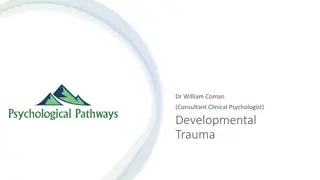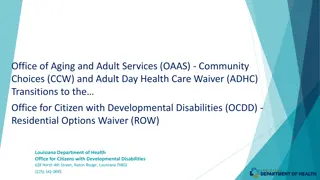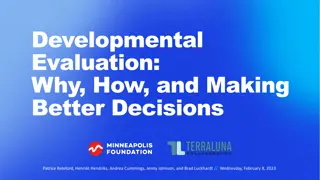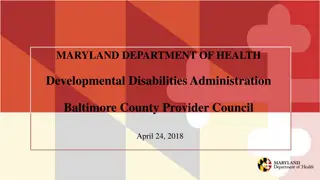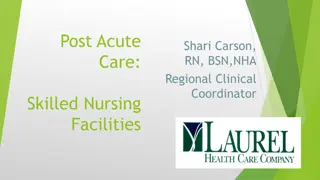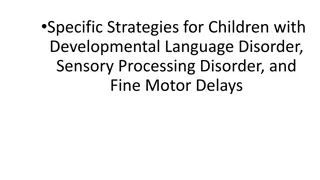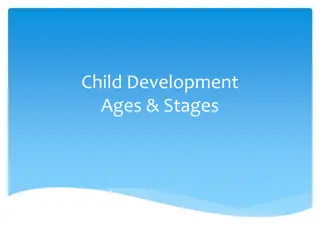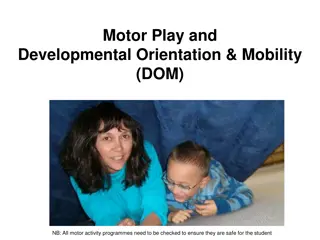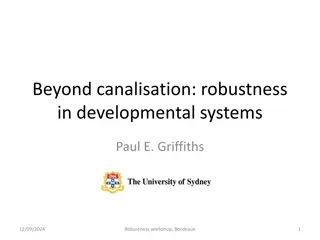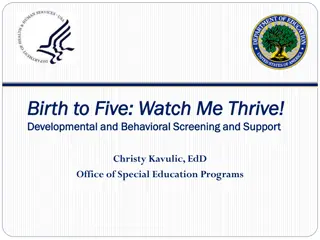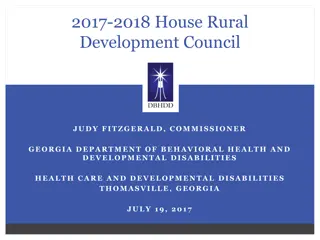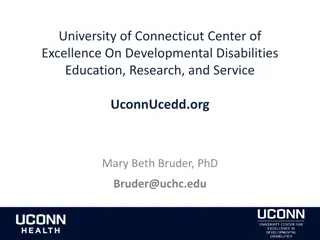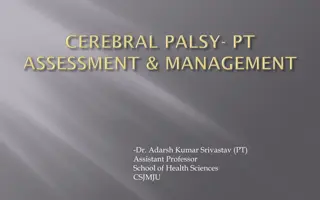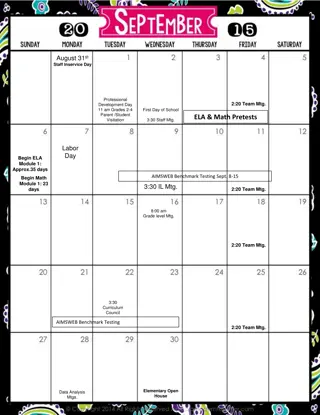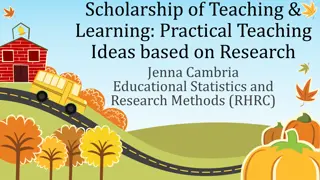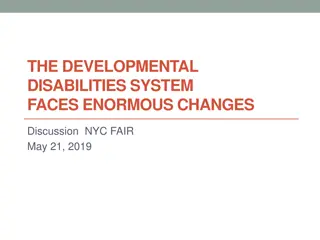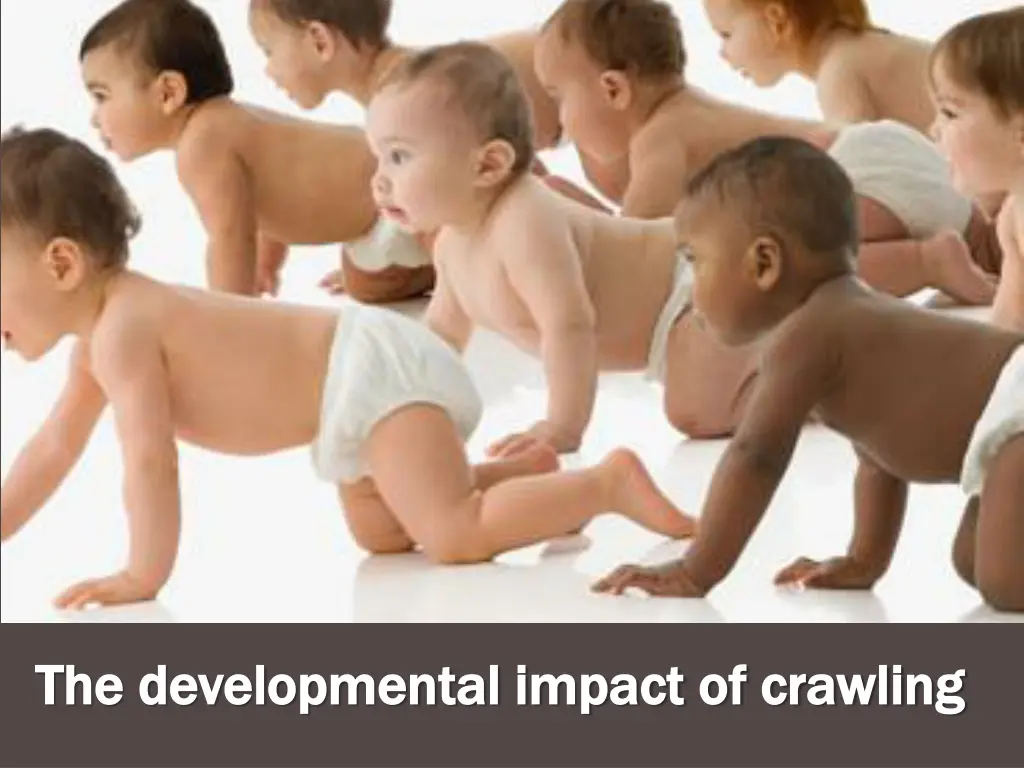
Impact of Crawling on Child Development
Discover the importance of crawling for child development, including enhancing balance, strength, vision, body awareness, and motor planning. Explore how crawling aids in the development of crucial skills like mobility, upper extremity strength, and tongue/jaw lateralization.
Download Presentation

Please find below an Image/Link to download the presentation.
The content on the website is provided AS IS for your information and personal use only. It may not be sold, licensed, or shared on other websites without obtaining consent from the author. If you encounter any issues during the download, it is possible that the publisher has removed the file from their server.
You are allowed to download the files provided on this website for personal or commercial use, subject to the condition that they are used lawfully. All files are the property of their respective owners.
The content on the website is provided AS IS for your information and personal use only. It may not be sold, licensed, or shared on other websites without obtaining consent from the author.
E N D
Presentation Transcript
The developmental impact of crawling The developmental impact of crawling
WHAT IS CRAWLING? Motor milestones: Quadruped: 7 months Crawling/creeping: 7-10months Creeping vs. Crawling Crawling Creeping 9, 10
WHY IS WHY IS CRAWLING CRAWLING IMPORTANT? IMPORTANT? More than just a form of mobility! 1. Balance 2. Strength 3. Vision 4. Body awareness 5. Mobility 6. Motor planning 7. Upper Extremity Development 8. Tongue/Jaw lateralization 3, 9, 10
BALANCE Protective Extension Rocking, rotating, reaching Righting reactions Proprioception, vision, & vestibular system
BALANCE REACTIONS 3, 10
STRENGTHENING Role of reflexes Proximal strengthening Scapular strengthening Co-contraction of antigravity flexors and extensors
STRENGTH 3, 9, 10
VISION Binocular vision Depth perception Hand eye coordination Pic 1 Scanning the environment 1, 2, 3, 5
BODY AWARENESS Weight bearing through the joints Tactile awareness Pic 2 1, 2
MOTOR PLANNING Right and left hemispheres working together All four lobes of the brain Graded control Dissociation of movement Pic 3 9, 10
MOBILITY Exploration Decision making Movement out of personal space 3, 7, 9, 10
UPPER EXTREMITIES Joint control: shoulder, elbow, forearm, hand Arches of hand Motoric separation Hand strength/tone Bilateral coordination Reach and play with toy Pic 4 Pic 5 3, 9, 10
TONGUE AND JAW DISSOCIATION Dissociation of tongue and jaw for chewing and speech Hips and the jaw Speech generation during physical activity Pic 6 5, 6, 8
WHAT HAPPENS IF THEY DONT DON T CRAWL? Maybe nothing Likely Something
EXAMPLE Mr. and Mrs. Smith are concerned about their 7y.o. daughter s difficulties with: Handwriting Unclear speech General clumsiness she runs into the walls, avoids participating in sports and often loses her balance. Weakness She s just kind of awkward. Maybe she didn t crawl!
DID ALL OF YOUR PATIENTS CRAWL AS INFANTS?
INTERVENTION IDEAS Reteach crawling Play games in quad Wall push ups Ball push ups Flashlight tag Prone in net swing Play games in prone/prone prop Leap frog Trampoline Vision Vision Flashlight tag Scavenger hunt Card game in prone prop Strength Strength Transitioning in and out of quad Stability ball work Scapular strengthening Visual game while: Quad on platform swing Lateral/forward reach on barrel swing Trampoline Hippotherapy Treatment on a swing Pelvic motion on a stability ball Global Global Proprioception Proprioception Blue swing Crashing Balance Balance UE weight UE weight bearing/ bearing/ Proprioception Proprioception Prone in net swing Quad on trampoline Push ups (wall, ball) Playing in quad Retrieving game pieces in quad Speech Speech
REFERENCES 1. Characterizing crawling behaviors in 7 to 14 month-old typically developing infants and their relation to visual proprioception. Pediatric physical therapy. 2012;24(1):94. 2. Clearfield MW. The role of crawling and walking experience in infant spatial memory. J Exp Child Psychol. 2004;89(3):214-241. doi: 10.1016/j.jecp.2004.07.003. 3. De Jager M. Understanding developmental milestone: Get moving. Natural Medicine. 2010(61):29. 4. Dworkin-McDaniel N. Tiny feet, big job. AM BABY (PRENATAL ED). 2007;69(4):24. 5. McEwan MH, Dihoff RE, Brosvic GM. Early infant crawling experience is reflected in later motor skill development. Percept Mot Skills. 1991;72(1):75-79.
REFERENCES 6. Ozonoff S. Gross motor development, movement abnormalities, and early identification of autism. J Autism Dev Disord. 2008;38(4):644. 7. Porretto D. Go, baby, go! AM BABY (PRENATAL ED). 2003;65(1):47. : Crawling gives baby a taste of independence and a new view of the world. American baby. 2006;68(12):58. 8. Matson JL, Mahan S, Kozlowski AM, Shoemaker M. Developmental milestones in toddlers with autistic disorder, pervasive developmental disorder-not otherwise specified and atypical development. Dev Neurorehabil. 2010;13(4):239-247. doi: 10.3109/17518423.2010.481299. 9. Campbell SK, Palisano RJ, Orlin MN. Physical Therapy for Children, 4th Edition. Elsevier Saunders, St. Louis, 2012. 10. Ollendick K. Reflexes, reactions, and postural control: birth-1 year of age. Powerpoint Lecture presented in Bondurant Hall, UNC-Chapel Hill. January 2012

